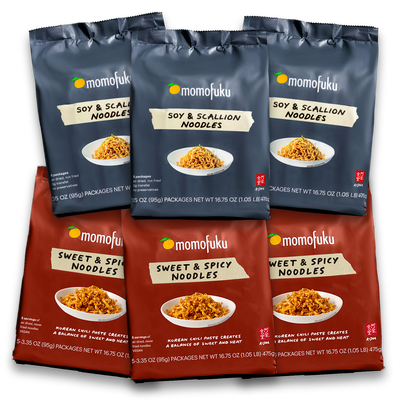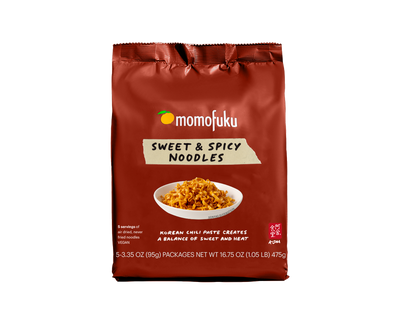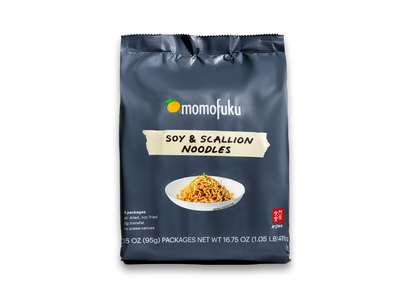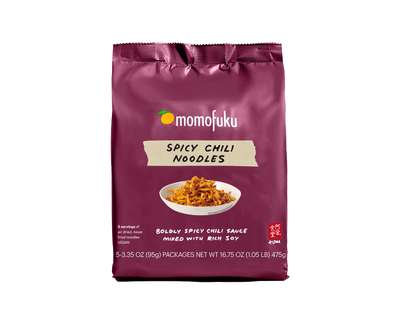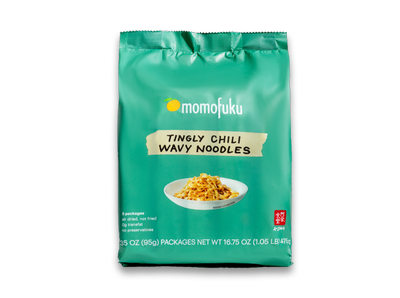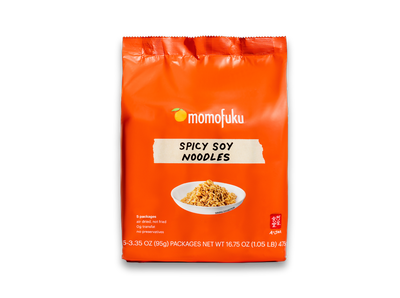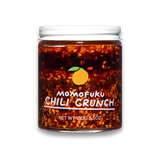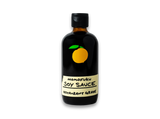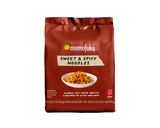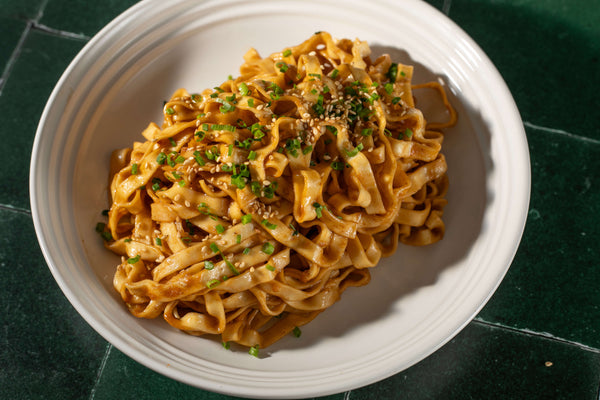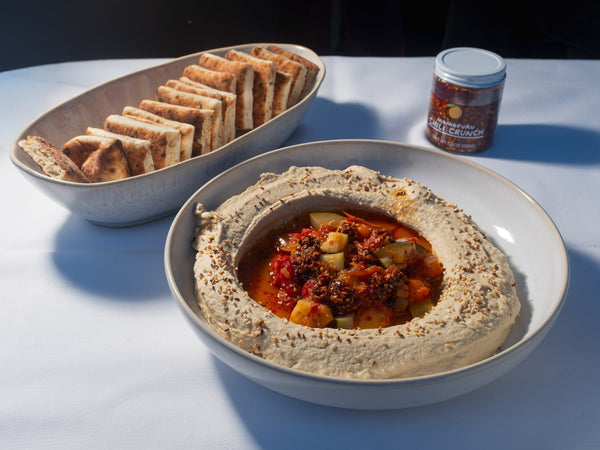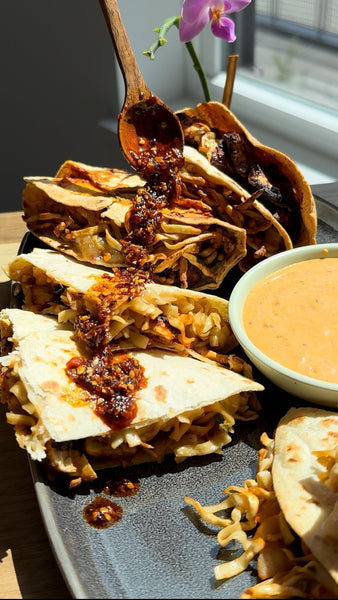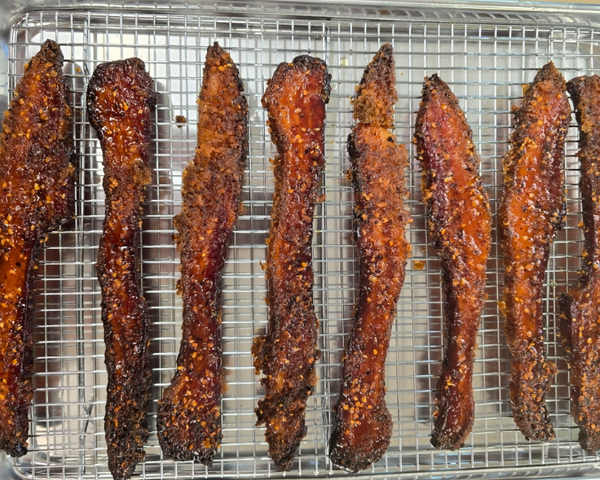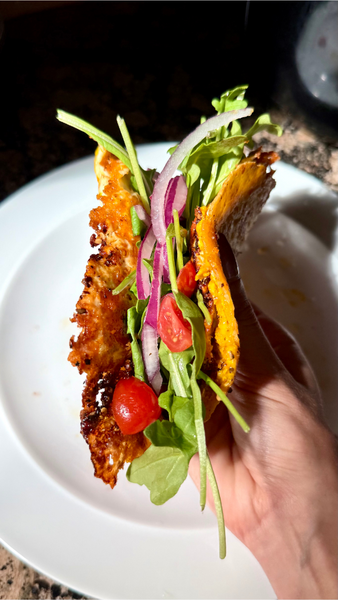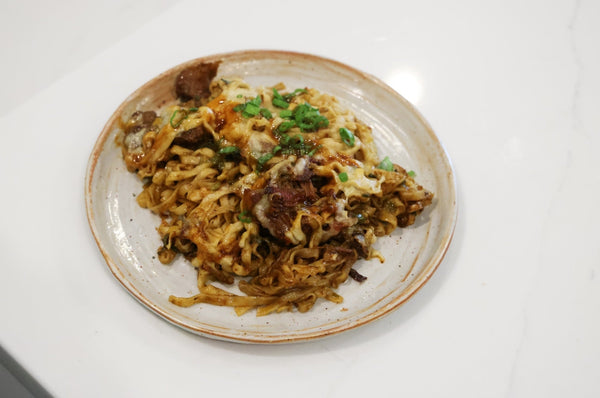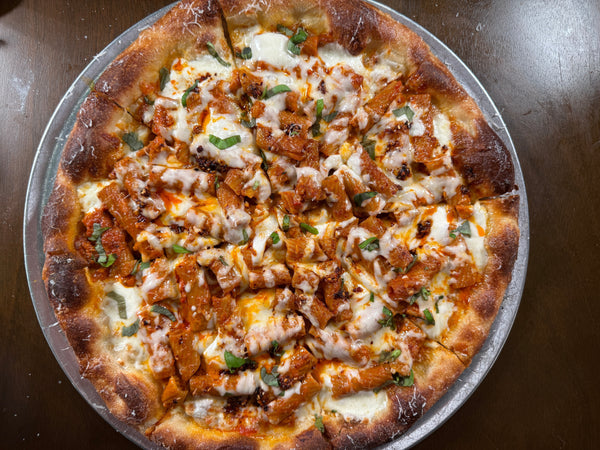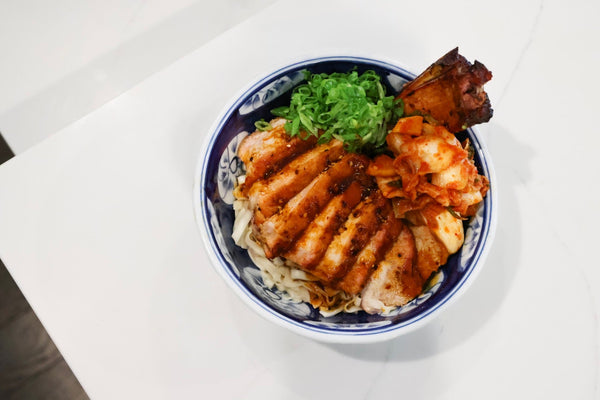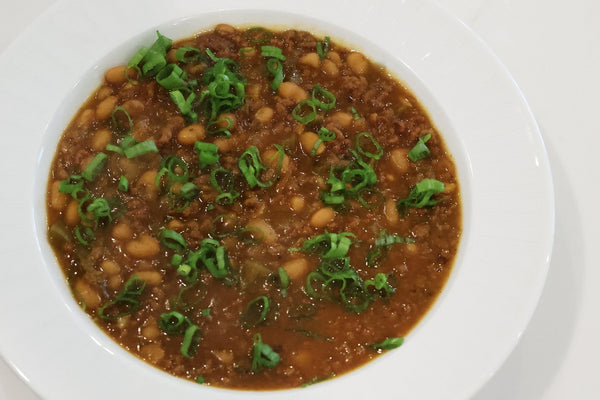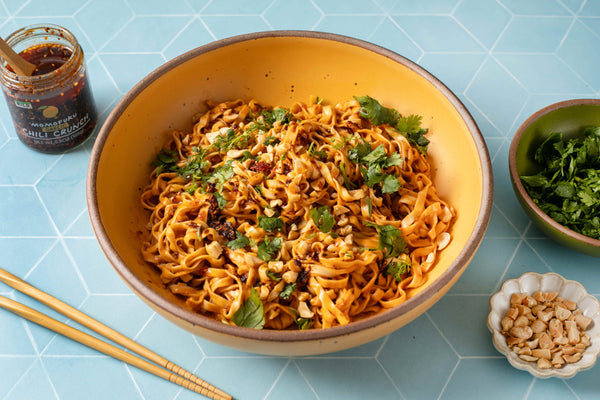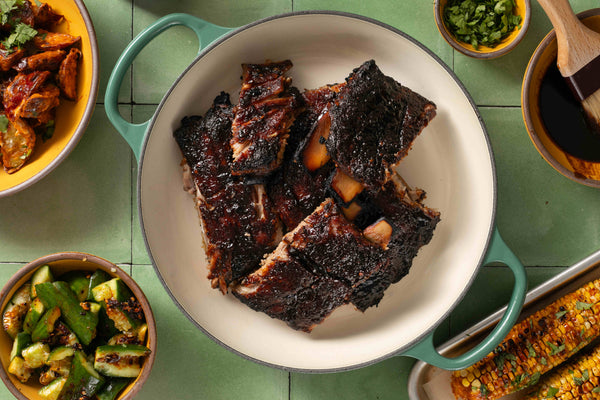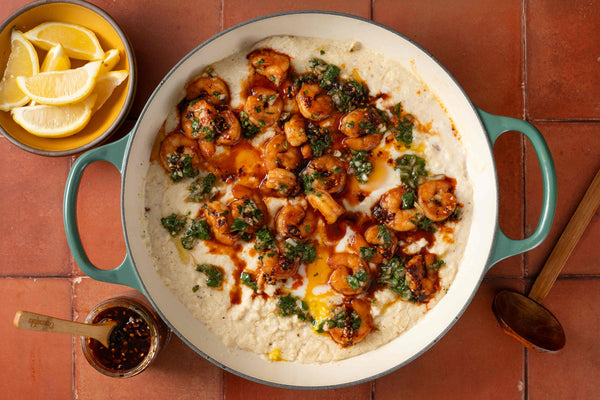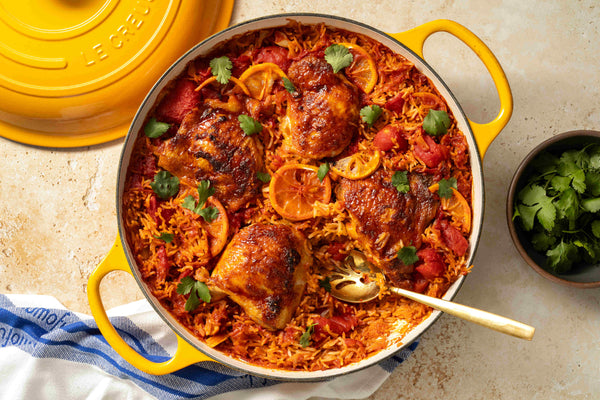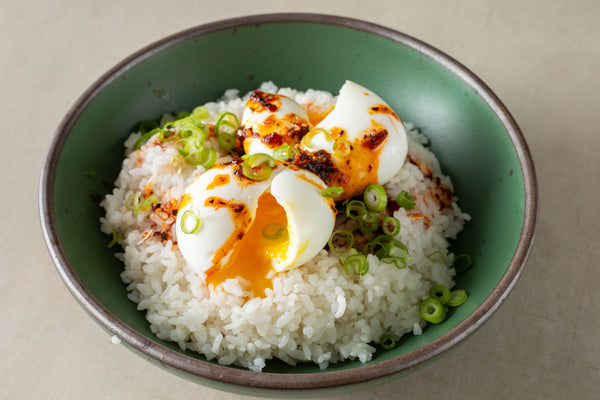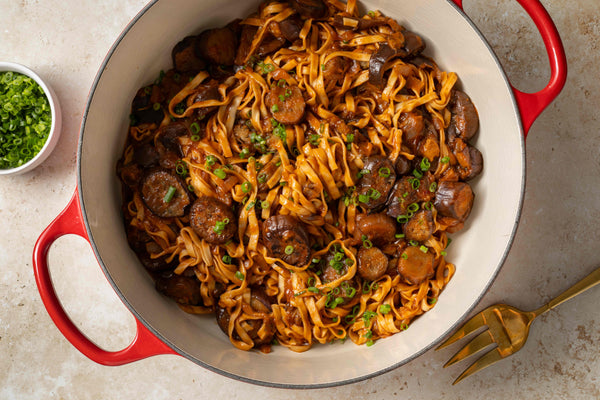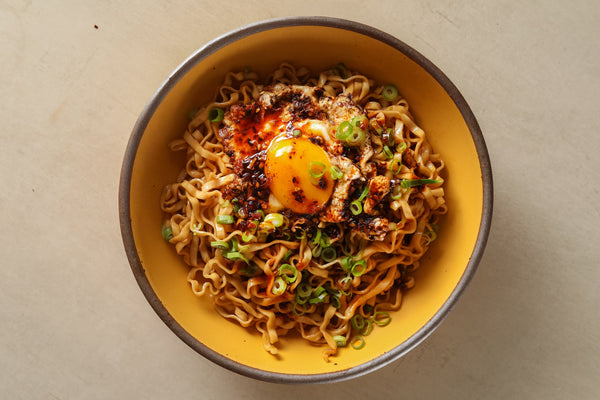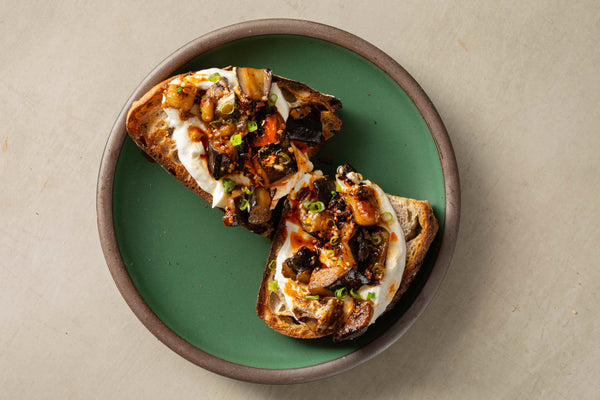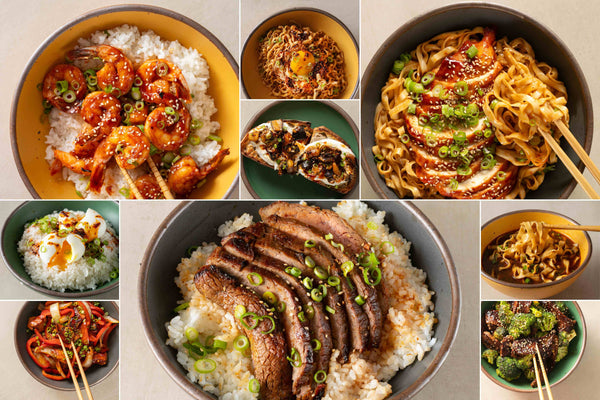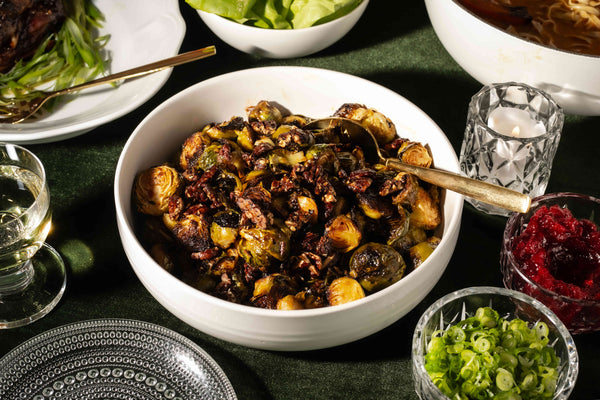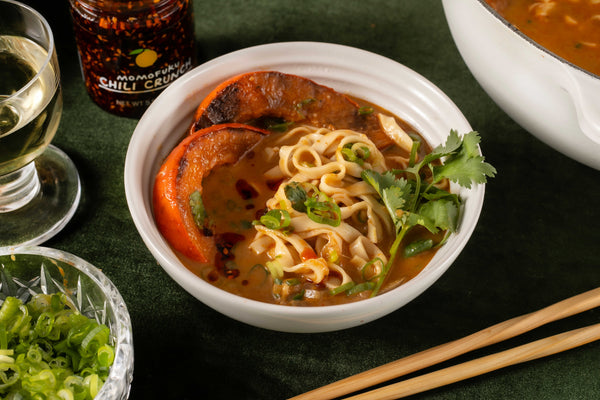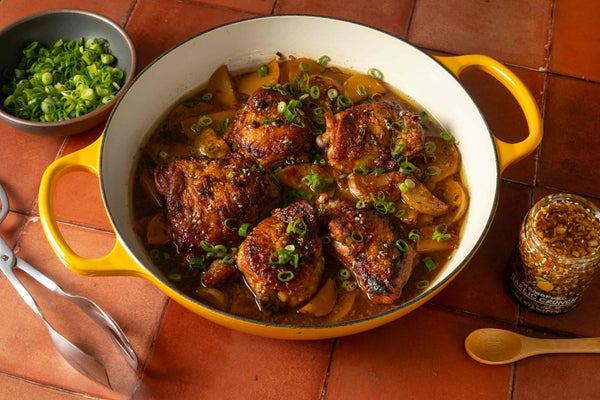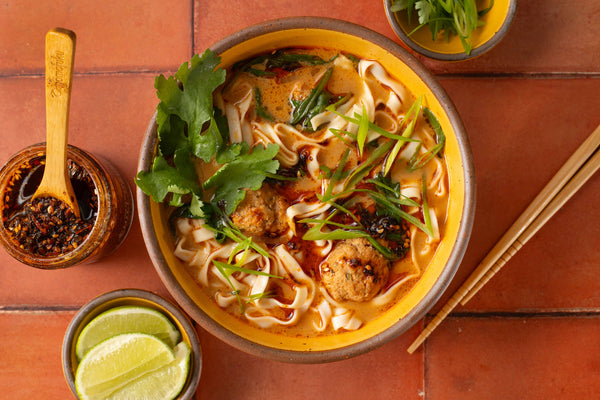Sweet & Spicy Basil Noodles with Chicken
This quick noodle stir fry is inspired by Pad Kee Mao (Drunken Noodles) — filled with tangy Thai basil and the savory sweetness of our Sweet & Spicy noodles. While you can opt for regular basil in a pinch, try to find Thai basil. The almost anise-like flavor really brings this recipe together. Feel free to sub in tofu or shrimp, if you’re not a fan of chicken. Serves 3.

what you need from momofuku



$0
INGREDIENTS
- 4 packs Momofuku Sweet & Spicy Noodles
- 1 pound boneless, skinless chicken, sliced (thighs or breasts)
- 1 red bell pepper, sliced
- 1 onion, thickly sliced
- 6 cloves garlic, sliced
- 1 bunch Chinese broccoli, broccolini or broccoli, roughly chopped
- 1–2 tablespoons Momofuku Chili Crunch
- 2 tablespoons Momofuku Soy Sauce
- 1 heaping cup of Thai basil, packed, plus more for serving
- Kosher salt
- neutral oil
Directions
Cook noodles for 2 minutes, rinse with cool water and shake dry. Reserve 1 cup of noodle water.
Season chicken with Kosher salt. Heat 1 tablespoon of neutral oil in a large skillet over high heat until the oil is simmering, and add chicken to the skillet. Cook undisturbed for 3–4 minutes until the chicken is browned, then flip. Cook 3–4 more minutes until the other side is browned, and the chicken is cooked through. Remove from the skillet.
Reduce heat to medium and add another tablespoon of neutral oil to the skillet. Add red bell pepper, onion, and garlic and stir fry for about 5 minutes, until the onion and peppers are softened. Add 1–2 tablespoons of Momofuku Chili Crunch (depending on how spicy you want your noodles), 2 tablespoons of Momofuku Soy Sauce, and broccoli and stir fry for 2 minutes.
To the skillet, add cooked chicken, cooked noodles, 4 noodle sauce packets, heaping cup of Thai basil, and the reserved cup of noodle water. Bring to a boil and cook, stirring continuously, until the sauce generously coats the noodles and the vegetables are evenly mixed. Adjust seasoning, as needed, with Momofuku Soy Sauce.
Serve immediately with more Thai basil.
To learn more about Pad Kee Mao, check out this article in The New York Times about its origins, as well as other popular Thai noodle dishes.

